In Tuscany it is necessary to cultivate the back roads. Only in this way does the landscape meet expectations: gentle hills, sometimes wooded, and cypress trees that precisely punctuate the slopes that rise towards a rugged horizon.
If everything starts in Florence, the inevitable axis, the possibility of extending an hour the road to Arezzo through the Casentino. The browser makes the alternative easy by indicating that we are going to Poppi.
there it rises a castle where Dante stayed and a light, water-resistant and rough wool is produced. Its traditional color is orange. Vivid orange against the dark green of the forest. We enter the chromatic universe of Piero della Francesca.
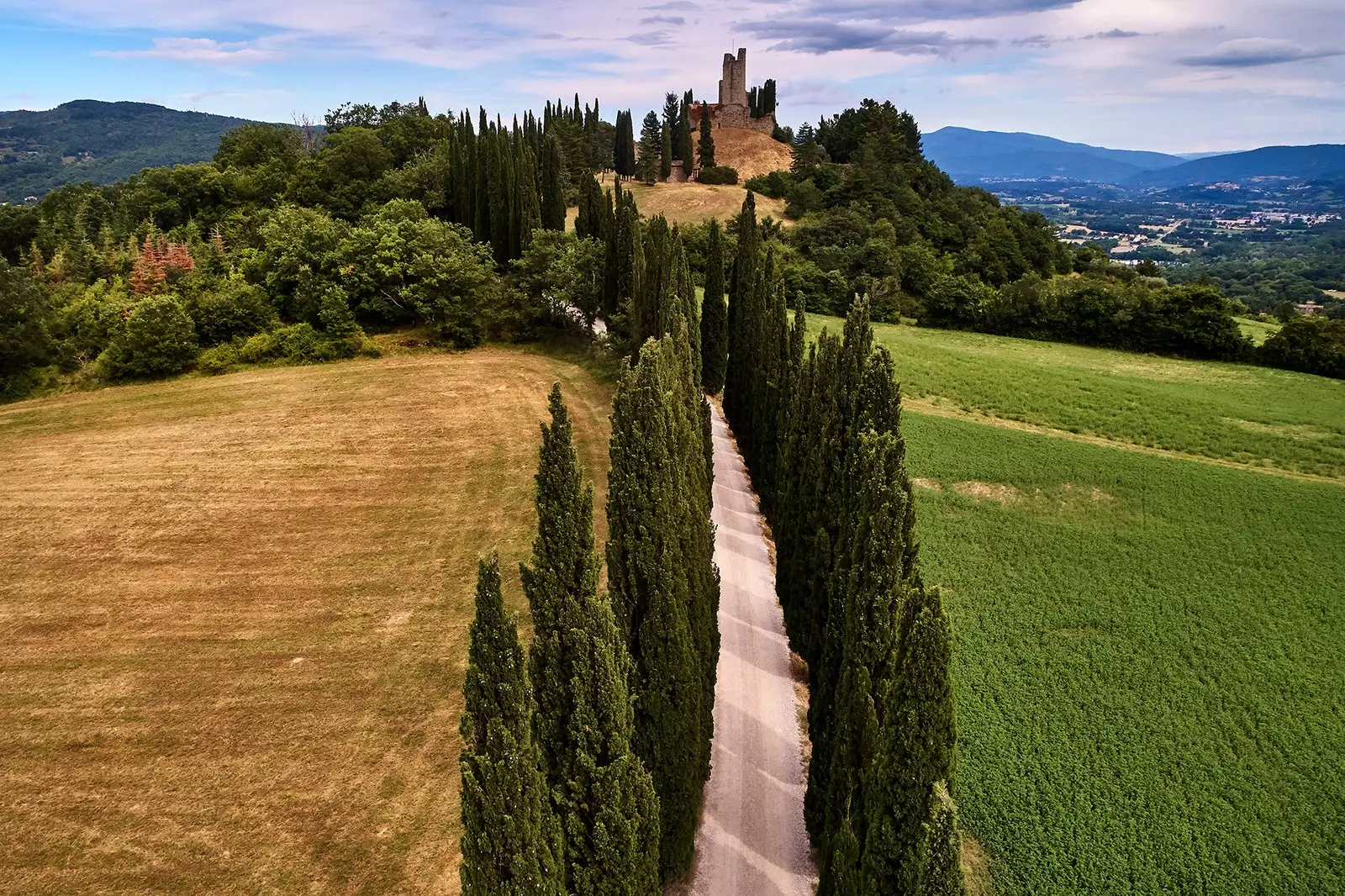
Casentino Castle in Tuscany.
The painter would have used this combination only in one battle, because only a confrontation would deserve this clash of color. In his works he favored harmony in tones: blues, greens and reds that seem diluted on the surface of the fresco. His harmony is so delicate that the contrasts merge into a fresh and calm range (except at night and in battle, because the exception is necessary).
Arezzo it is inclined, of living stone. It was Etruscan and walled, and Aretin pottery was made there, brilliant and decorated in relief, famous at the banquets of ancient Rome. After parking outside the compound, the first church we come across, San Domenico, carelessly houses a monumental crucifix by Cimabue, Giotto's master. If you have spent a few days touring Florence before leaving, this excess will not surprise you.
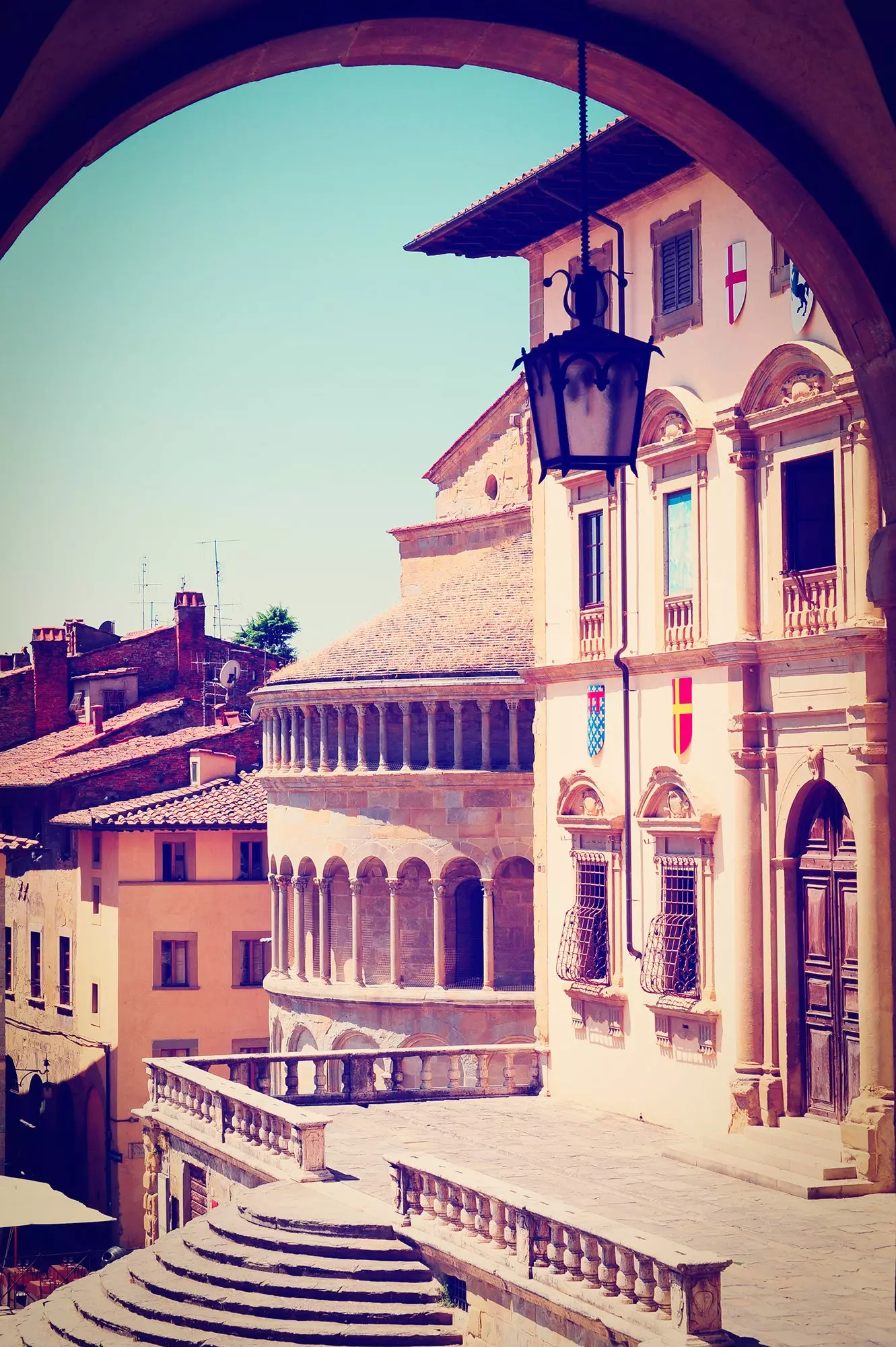
Arezzo.
The street that descends from the old castle, now a cathedral, stops at Santa Maria della Pieve. Its façade, as intentionally Romanesque as the tall bell tower, rises in rows of columns that alternate turned shafts.
Its apse closes under the Piazza Grande, irregular, sloping, former market space and closed at its upper end by the palace of the Vasari Lodges . This Renaissance artist and biographer was born in Arezzo and, as usual in Tuscany, the house where he lived is preserved, whose walls he decorated with frescoes that exalt the art of painting.
It is necessary to descend a little more to reach San Francesco, seat of the cult of Piero della Francesca. There the painter spent seven years growing the frescoes in the chapel behind the main altar in honor of the Bacci, a powerful family in the city.
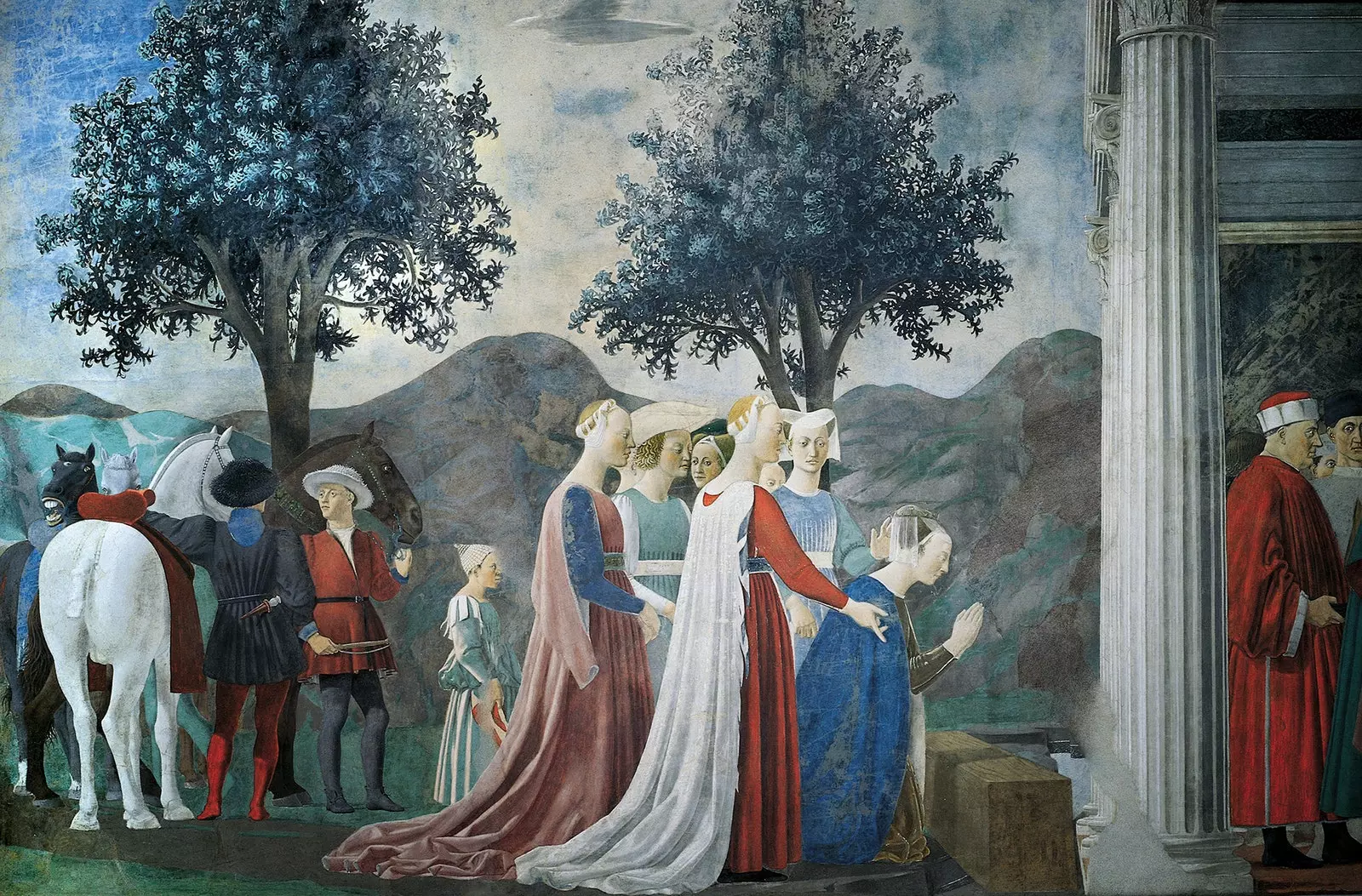
Meeting of the Queen of Sheba and King Solomon, detail from 'The Legend of the True Cross', 1452-1466, by Piero della Francesca, in the church of San Francesco, Arezzo.
The topic, the legend of the Holy Cross, it is treated in a disjointed way, but that does not affect the beauty of the whole. When he began work in 1452, Piero had reached artistic maturity. More famous in his time as a mathematician than as a painter, he united in his works art and geometry.
Impressed in his youth by the works of Masaccio and Uccello in Florence, he endowed his figures with a serene volume. in San Francisco, The Queen of Sheba goes on an embassy to Solomon. Della Francesca does not fix his attention on the richness of her clothes, but on her gestures and the harmony of the cloaks of her ladies: the blue of her cape, the red, pink, and white on the greens of the hill.
Lower down, at eye level, is one of the first nocturnal scenes of Italian art. Emperor Constantine dreams of victory in battle. The brightness of his shop contrasts with the darkness outside. In the battle that follows, the colors become vivid and intense without reaching dissonance. The orange of the Casentino takes center stage.
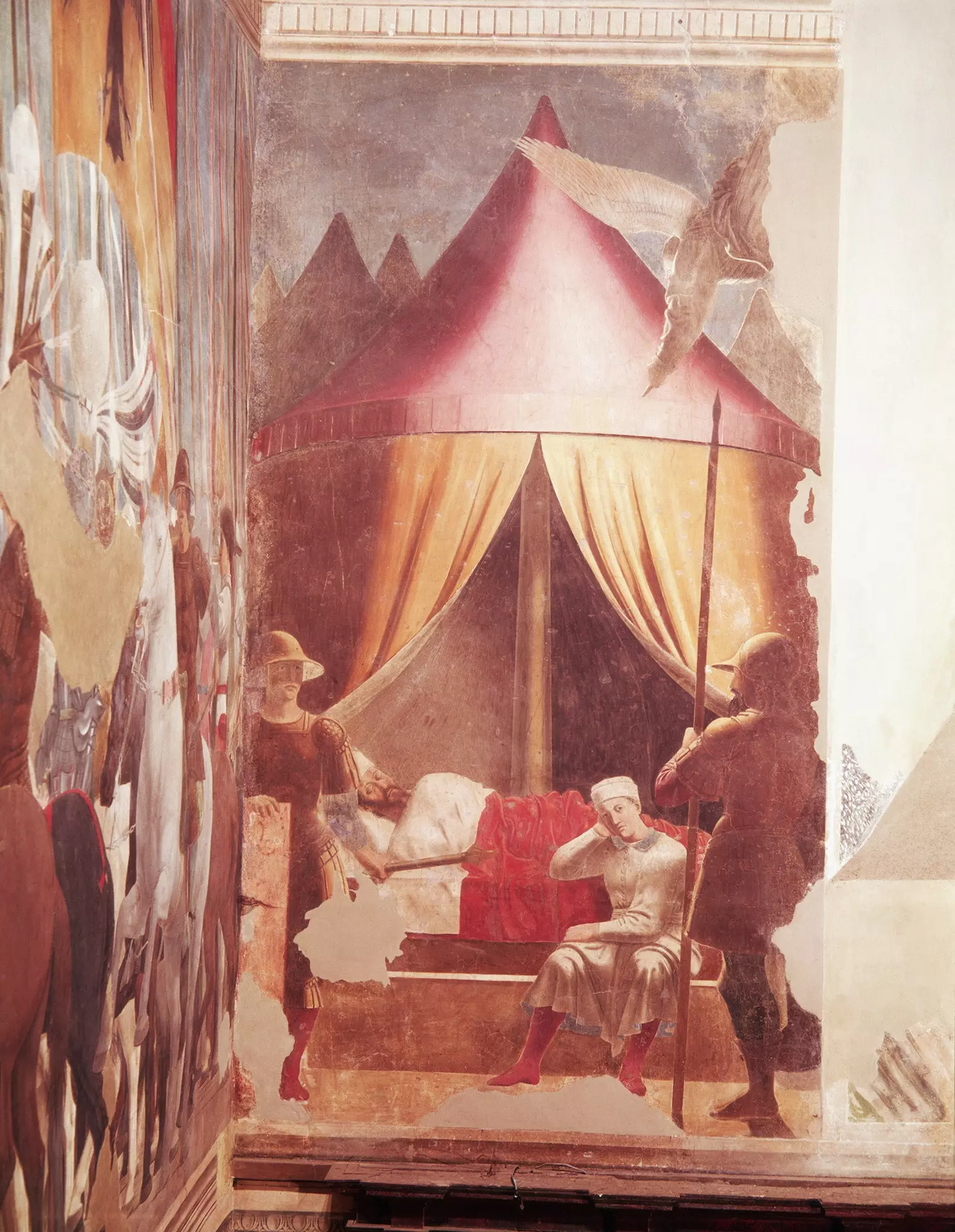
Detail from the series of frescoes 'The Legend of the True Cross', by Piero Della Francesca, in the Church of San Francesco, from the scene 'The Dream of Constantine' (c. 1452).
Geometric rigor does not exclude an element of humour. In one of the scenes, the effort of the three characters burying the cross destroys his clothes. A stocking falls, the doublet hangs, the breeches open and reveal their contents.
After the contemplative elevation, there is a pause in Osteria Agania. A pause of checkered tablecloth and old prints, perhaps of ribollita (Tuscan vegetable soup), steak, or pasta sugo finto (false sauce), vegan option to the local ragu.
Piero was not born in Arezzo, but in neighboring Sansepolcro, about 35 kilometers away. According to legend, the city was founded by two pilgrims returning from the Holy Sepulchre, in Jerusalem. The legend of the Cross spins the plot with precision.
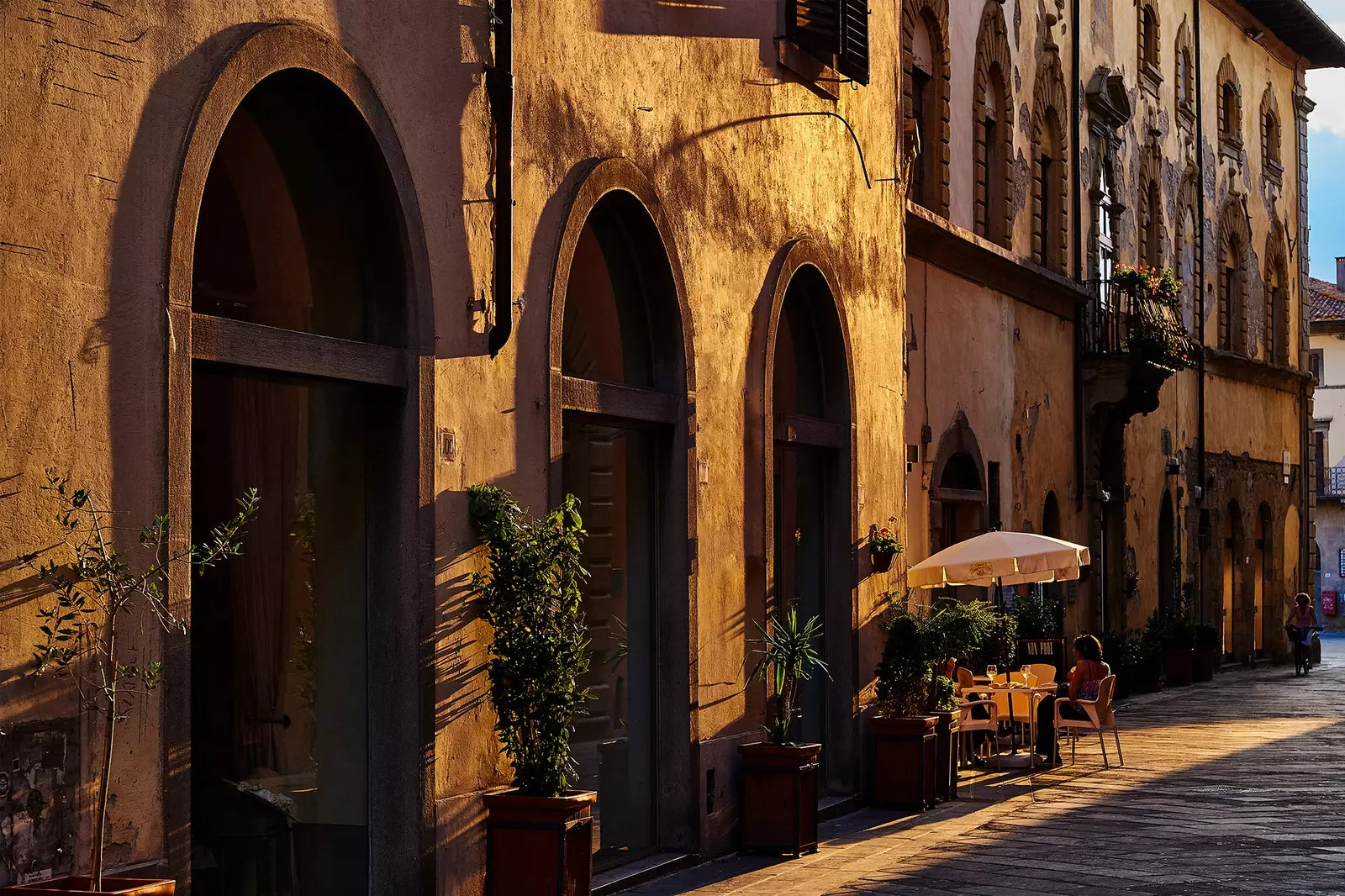
Aperitif time in Sansepolcro.
Firstborn of a prosperous family of merchants, he worked at the courts of Urbino and Ferrara, but never left Sansepolcro. There he shaped a palace with an aristocratic air that today is the headquarters of the foundation that bears his name. Counselor of the consistory and admired figure, he was prophet in his land.
Before reaching the city, it is a good idea to stop at Monterchi. His mother came from this town, and there he received a strange assignment: The Madonna of Childbirth. The work is preserved in a pavilion created expressly. Two angels open the curtains of a shop and show the Virgin, upright, in a posture of advanced gestation, one hand on her hip and the other on the belly grown under the half-open tunic.
Sansepolcro is orderly, silent, leisurely, Tuscan. Piero's work is concentrated in the Museo Civico. The figure of the Virgen de la Misericordia is overwhelming, covering the faithful with her mantle. Her face borders on abstraction. Like the Virgin of Childbirth, like the Queen of Sheba, she keeps her eyes half open, because Piero's figures look inward.
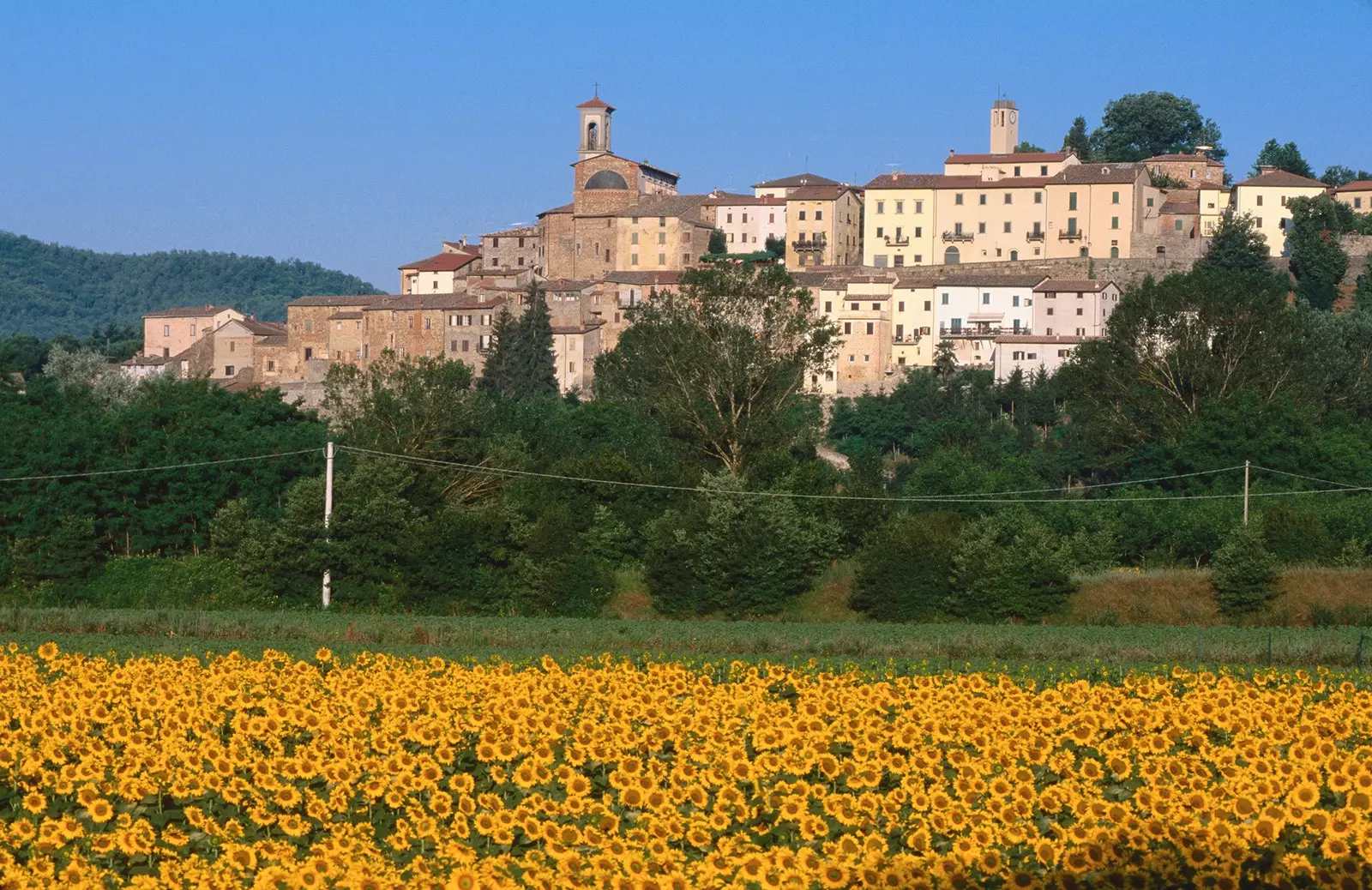
Monterchi, the town of Piero della Francesca's mother, in Tuscany.
In one of the rooms of the old town hall is preserved The resurrection which, according to Vasari, the artist-biographer, is his best work. Christ rises above the sleeping soldiers. His leg rests decisively on the edge of the tomb (the cross and the tomb, again). His gaze, this time, is direct. He challenges the observer.
In his biography, Vasari states that his obsession was with geometry and therefore he devoted the last years of his life to writing a treatise on this discipline. Of his scientific interest remains the balance and the peculiar perspective that he produces look in.
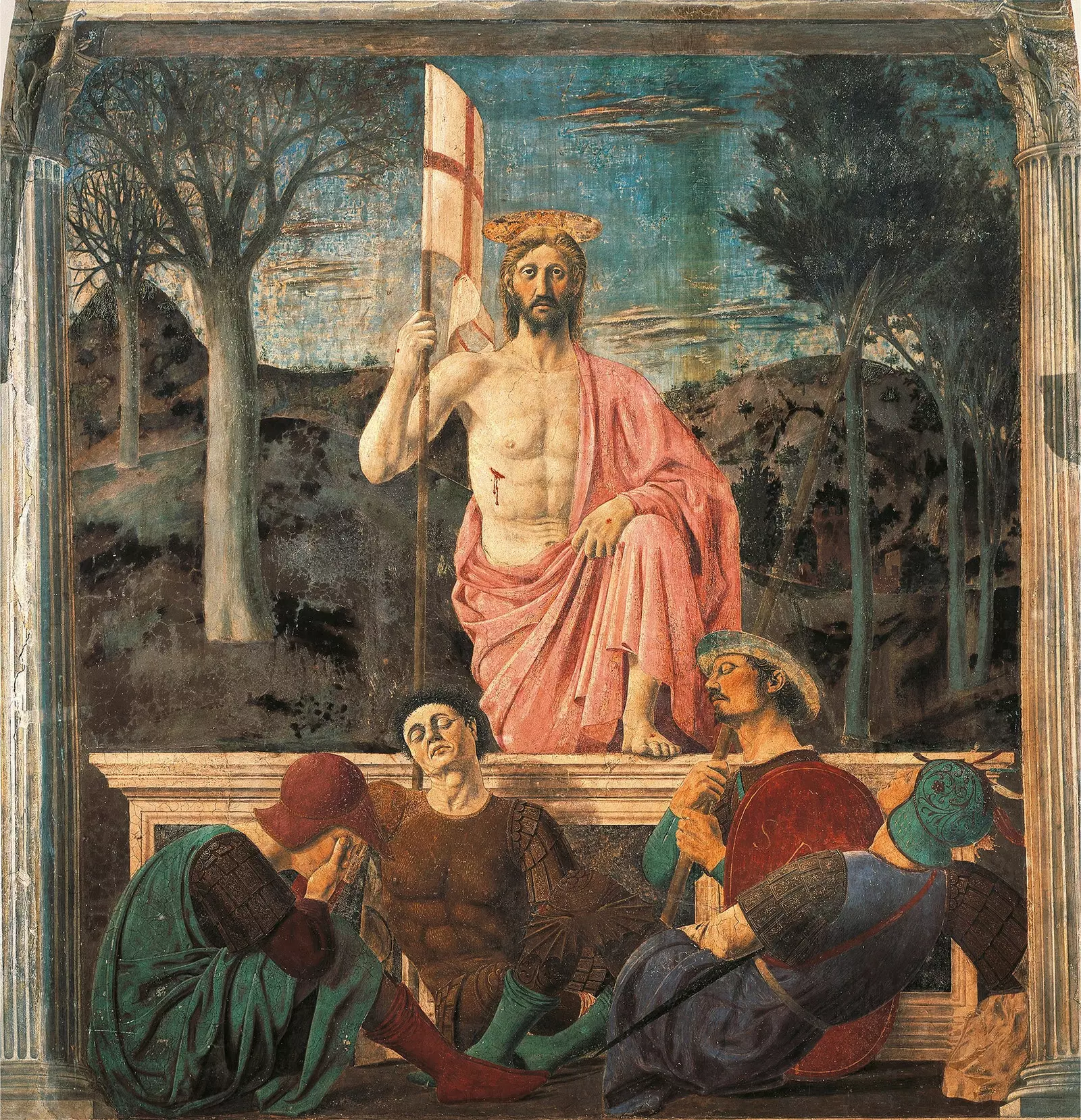
'The Resurrection' by Piero della Francesca (c. 1989).
